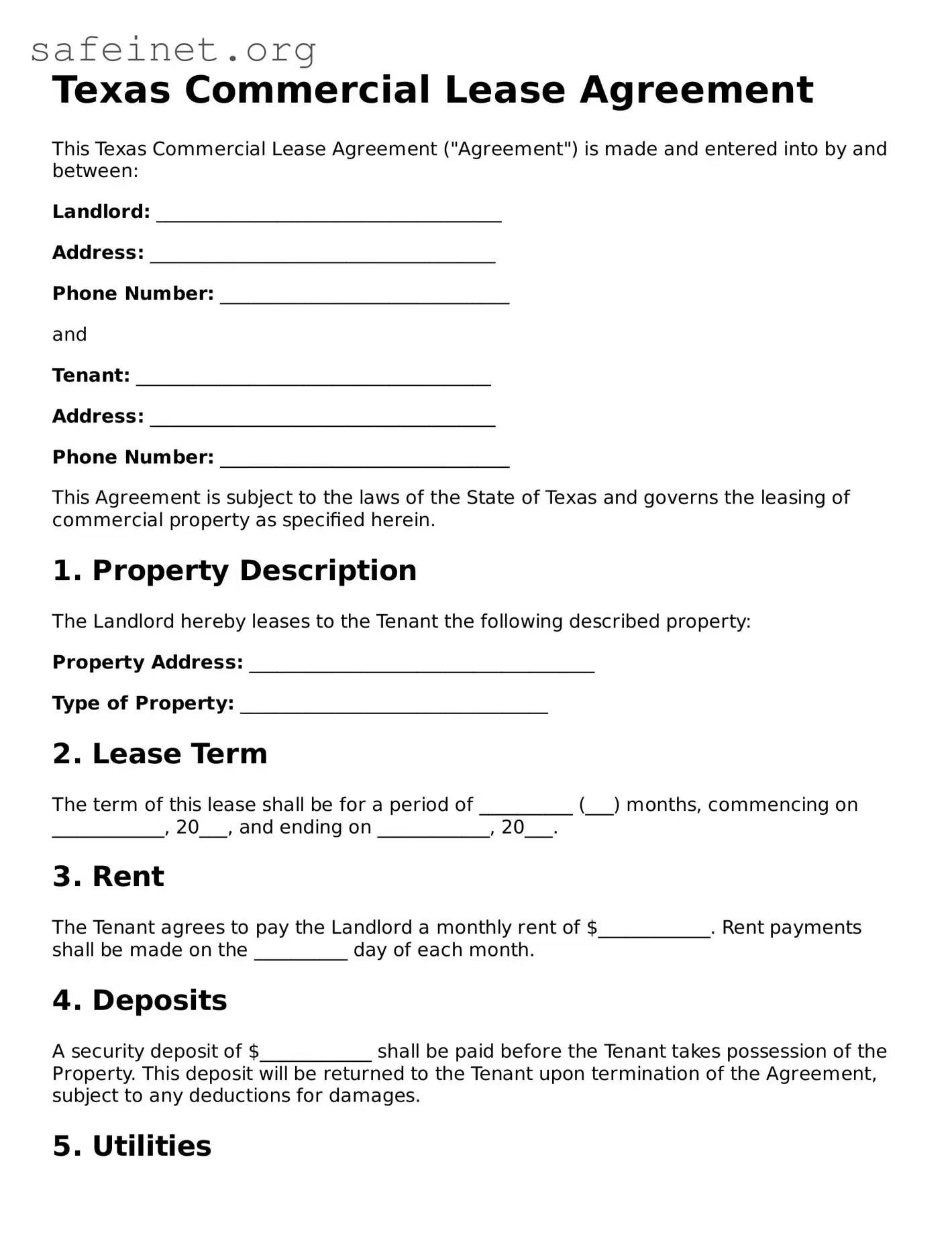Texas Commercial Lease Agreement
This Texas Commercial Lease Agreement ("Agreement") is made and entered into by and between:
Landlord: _____________________________________
Address: _____________________________________
Phone Number: _______________________________
and
Tenant: ______________________________________
Address: _____________________________________
Phone Number: _______________________________
This Agreement is subject to the laws of the State of Texas and governs the leasing of commercial property as specified herein.
1. Property Description
The Landlord hereby leases to the Tenant the following described property:
Property Address: _____________________________________
Type of Property: _________________________________
2. Lease Term
The term of this lease shall be for a period of __________ (___) months, commencing on ____________, 20___, and ending on ____________, 20___.
3. Rent
The Tenant agrees to pay the Landlord a monthly rent of $____________. Rent payments shall be made on the __________ day of each month.
4. Deposits
A security deposit of $____________ shall be paid before the Tenant takes possession of the Property. This deposit will be returned to the Tenant upon termination of the Agreement, subject to any deductions for damages.
5. Utilities
The following utilities shall be the responsibility of:
- Landlord: _____________________________________
- Tenant: ______________________________________
6. Use of Property
The Tenant shall use the Property for the following permitted uses:
Permitted Use: ____________________________________
7. Maintenance and Repairs
The Tenant agrees to keep the Property in good condition and must notify the Landlord of any repairs needed.
8. Insurance
The Tenant shall obtain and maintain commercial liability insurance in an amount of not less than $____________ during the lease term. Proof of insurance must be provided to the Landlord upon request.
9. Default
In the event of a default by Tenant under this Agreement, the Landlord shall have the right to pursue any remedies available under Texas law.
10. Governing Law
This Agreement shall be governed by and construed in accordance with the laws of the State of Texas.
11. Additional Terms
Any additional terms and conditions must be outlined as follows:
Additional Terms: ____________________________________
IN WITNESS WHEREOF, the parties hereto have executed this Agreement as of the date first above written.
Landlord Signature: ___________________________ Date: _______________
Tenant Signature: ____________________________ Date: _______________
